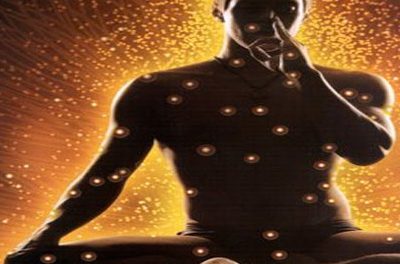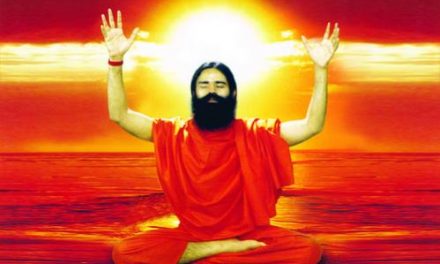Agnisar pranayama increases the internal energy and gives vitality. Those who are suffering with constipation, indigestion and loss of appetite they should get good benefits with its regular practice. People with excessive fat on the stomach should practice it regularly to reduce the fat.
This pranayama overcomes laziness, disinterest and strengthens the internal organs, muscles, nerves and blood veins. People suffering with lung problems can gain a lot. This pranayama cures asthma, tuberculosis and other serious diseases. It also cures the entire throat related problems and old kapha problems. It cures sleepiness and circulates inner energy. So that person gets the capacity to do his duties and is fit to face the day-to-day problems. The person is always happy and active.
Agnisar Pranayama
A regular practitioner of this pranayama makes the person expert in padmasana, which will be beneficial. This pranayama gives momentum to fire in the stomach. The fire is present inside the body. It produces heat in the minute and big parts and makes the body and mind active and strong. The main objective of this pranayama is strengthening the inner energy.
First Method of Agnisar Pranayama:
Sit in Padmasana and keep the hands on the knees in a comfortable position. Close the eyes slightly and concentrate on the mind with normal breathing.
Exhale slow, deep and stable breathe. Stop the breathe outside, i.e., do Bahirmukh. Stretch both the hands straight and keep them on the knees with slight pressure. Contract and expand the stomach. Try to touch the navel deep inside the stomach.
Keep the stomach and hands normal before doing poorak i.e., inhale. Now take deep, stable and slow breathe.
This is one cycle of Agnisar pranayama. In one cycle contract and expand the stomach at least ten times. Increase the number to 30. In the beginning practice it for 5 times and then slowly increase is it up to 15 cycles. During winters you can practice it for 25 cycles. Breathe normally, rest for sometime and then do shavasana.
Second Method of Agnisar Pranayama:
Remain in Shavasana for five to ten minutes and take deep breathe as in the first stage. Stop the breathe inside and do Antarkumbhak. Do moolbandha and Jalandhar bandha at this stage.
As in the first method, stretch the hands straight and bend the head as much as you can and try to touch the chest with the chin. Do moolbandha along with this so that the moolbandha is stretched upwards. In men the moolbandha is situated between the rectum and the genitals and in case of women it is in between the uterus and vagina.
Before exhaling loosen the moolbandha and then the Jalandhar bandha. Keep the hands normal. Then deeply breath in like in the first stage.
This is one cycle. Rest for some time in Shavasana after doing five to seven cycles of this pranayama.
Cautions while practicing Agnisar Pranayama:
This pranayama should be done in the morning hours after passing bowels and getting free from the morning chores. Those who want to practice it in the evening should do after four hours of having meals.
During winters, Agnisar pranayama should be done as per the procedures. This is the best time for this pranayama. During summers after doing this pranayama ten rounds of Shitali pranayama should be definitely practiced.
During the practice period the person should eat simple, pure food. Avoid eating heavy, oily, fried and non-vegetarian food.
Smoking and alcohol should be completely avoided.
The patients of intestinal problems, hernia, high blood pressure and other diseases should not practice it.
If you have undergone stomach operation recently then this pranayama should not be practiced. It should be done under the guidance of some yoga expert after few months.
Stop the practice immediately if you experience tiredness and practice it the other day.
Practice it according to your physical capacity. Do not do kumbhak in excess of your body capacity. Make sure that during Bahirkumbhak slightest air should not get inside.
Patients suffering with ear, nose and eye problems should not practice agnisar pranayama.










Greetings,
Very interesting. All understood, except the following:
– Hands position on the knees is palms facing upwards or facing downards ?
– Antarkumbhak : kumbhak means retention of breathing but what’s “antar” ?
Thanks
–
i thank you sir for wonderful information really it is helping alot
Post photography along the mentioned aasanas / pranayanam
thanks & regards
Best Articals
I request you to add video clippings for the Yoga and Pranayama exercises suggested in these articles which will be beneficial as also to understand easily to the members/followers of this site.
Hello, It would be nice if you can post videos of these yoga pranamaya breathing exercise.
I usually read your articles on Yog & Adhyatma.
It will be convenient & very useful, if such articles are made available in Hindi, if possible.
With regards,
Shyam Biyan i
Please Transalte in Tamil. Kindlylet us know what is Antarkumbhak. Do moolbandha and Jalandhar bandha and also
Bahirmukh
where can i learn this in chennai?
I practiced pranayama for many years but now due age & lumber problems doctor stopped my yogasanas & so also pranayam is stopped but you have given very nice info & I wish to restart pranayam Thanks
alongwith pranayama details show posturs it will be easily understad or insert viedeo withot this your effort is waste
practical video will give more understanding than the theory. however this information very useful.
Your articles on spirituality are highly knowledgeable and interesting. Keep sending these type of mails to me. I am myself a spiritual practitioner and Academician.
Thanks and regards
Dr. (Er.) Aman Jain
Let’s promote non violence & spiritual generation & betterment even in microbial organisms across the Universe and see the results of unparalleled prosperity.
Aman Jain
due to agnisar pranayama, which i recently started,all cough problems are getting cured ; due to asthamatic traits i could not go on doing other pranayamas such as anulom vilom deeply and vigorously ; but now it helped me doing other pranayama ; similarly my throat is also getting clear and i could speak at length without getting tired.
Agnisar pranayam is very helpful to cure deases and increase inner strength. our rishs were still to be remembered for such knowledge.
ear Rina, any hath yog practice shoul not be done w/o experts guidance. So, photographs may cause harm ,if not done properly. Advised contact an expert.
I do practice Pranayama which includes Agnisara, helps me keeping my blood sugar under control, of course, medicines followed by diet.
kind regards
Thanks for great article. As here some members suggested no to do this practice without a guru or trainers supervision is correct. This should to be taken as information. Not to practice. Practice should be done under the guidance of gurus. So suggest no to do practice without supervision.